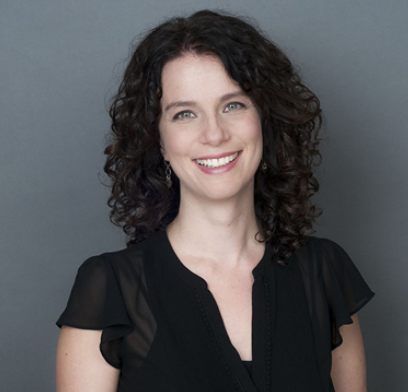Bring a Future Lens To Your Relationships

I get great joy from connecting the wisdom from one context and applying it to another. In this case the wisdom comes from a parenting course, and the application is your relationships at work.
The topic was discipline, and the facilitator made a powerful distinction between trying to get your child to do what’s right (ie., what you want right now), versus intentionally helping to cultivate the person you hope they will become down the road. Now I’m not saying that your colleagues are like your kids, or that work relationships hold the same importance as your relationships with your children, but there is a piece of wisdom here, so stay with me.
The facilitator asked me to imagine my child as the adult I hope she will become – with all of her strengths and gifts operating in full force. By generating that list, it was clear that many of the strengths that would serve her well (i.e, determination, passion, negotiation), were the qualities most challenging to manage in the present moment. That distinction between the imagined future of my kid, and the current reality, was a powerful place to see how my behaviour as a parent was (or wasn’t) serving who my child could become.
Let’s say my daughter had been demanding something and then lost it when she heard no. In the moment I might feel overwhelmed, irritated, frustrated and from there, assert my control by shutting her down either with words or actions like a time out. Yes, she needs to learn to manage her emotions when she doesn’t get her way; AND her fierce determination and strength will be wonderful qualities that I don’t want to squash out of her. So with this future perspective, I might pause and collect myself first. I don’t yell or send her away, but rather hold the boundary of no while allowing her to have her feelings about it. Later, when she is calmer, we might revisit the incident and talk about what she wanted and how else that could have played out. I shift from my reactive mindset in the present moment to a more generative one that stays connected to her potential.
Now, think about your colleagues, your boss, direct reports. Are you stuck in the current reality of the relationship, frustrated and critical of this person and their impact on you? Let’s translate some of this parent wisdom although not to imagine the other person in the future, but rather, the relationship.
Practice for a moment….
- Pick one person that you work closely with where the relationship is tough.
- Take a slow deep breath in and out to create some internal space.
- Imagine the ideal future relationship with this person. What words come to mind that capture the qualities of this relationship? Maybe it’s trusting, connected, collaborative, supportive, or something different. Write them down.
- Again, take a nice deep breath in and out and actually let yourself feel these words and imagine what this relationship could be. What does it feel like to imagine trust, collaboration, etc?
It’s possible the voice in your head is yelling things like “no chance”or “she/he isn’t capable of what I’m imagining”! Hear the voice but don’t believe it. Turn down the volume of that inner voice, and turn up the volume of imagining the future relationship – the ideal.
What’s available when we look to what’s possible, rather than what is right now? What opens up?
In a way everything opens up. According to Richard Boyatzis, when we tap into the ideal (or the dream/vision) we activate an internal state that he calls the Positive Emotional Attractor. Our parasympathetic nervous system kicks in and as a result our thinking, creativity, and sense of possibility expands. We are better able to see the big picture and our place in it.
In contrast, if we stay only in the current challenge, and the fixed perspective we have of the other person and the relationship, we find ourselves in the Negative Emotional Attractor state, where the nervous system is ready to defend, and our thinking is narrow and rigid. Not a great place to develop a stronger relationship.
I hope you did the first part of the exercise above. Now that you have imagined and articulated the ideal, and allowed yourself to feel what that relationship would be like, consider who you need to be right now to move in that direction. Identify 1-2 specific things you can either start or stop doing with this person to get closer to the vision of the relationship you truly want. A simple pause, making a commitment to have an authentic conversation about how to work better together, or even just identifying a strength that you really admire about this person will make a huge difference.
Relationships are the responsibility of both parties; however, the only person you can control or change is yourself. Start there and see what happens.

Tamar partners with leaders and teams committed to growing their leadership capacity and impact. She has extensive experience with clients from the private, non-profit, and public sectors, and has worked with clients from a variety of industries including healthcare, education, finance, communications, marketing/sales, and media. Read more about Tamar

